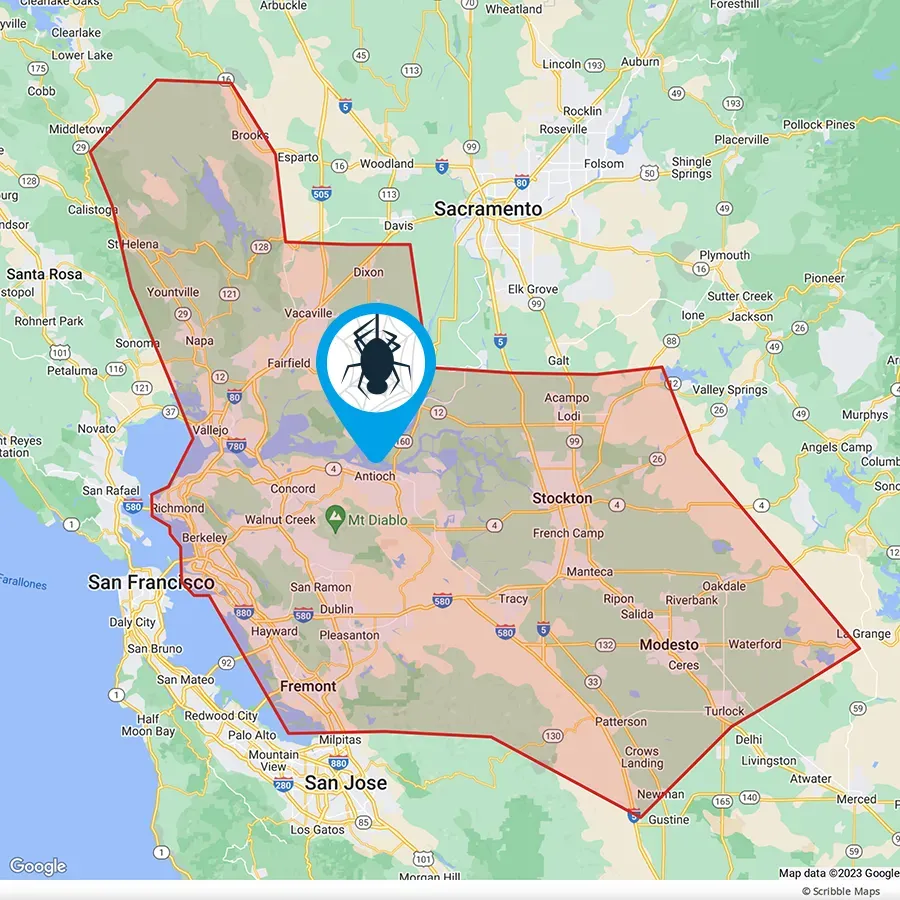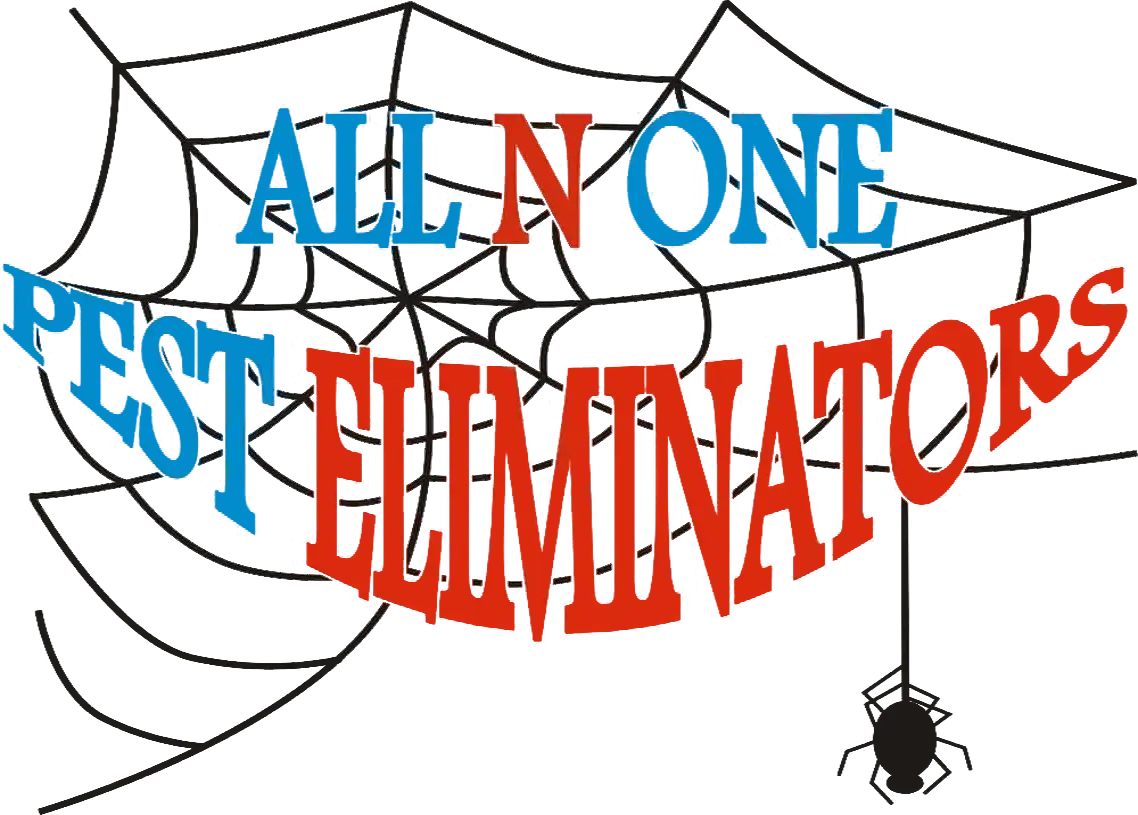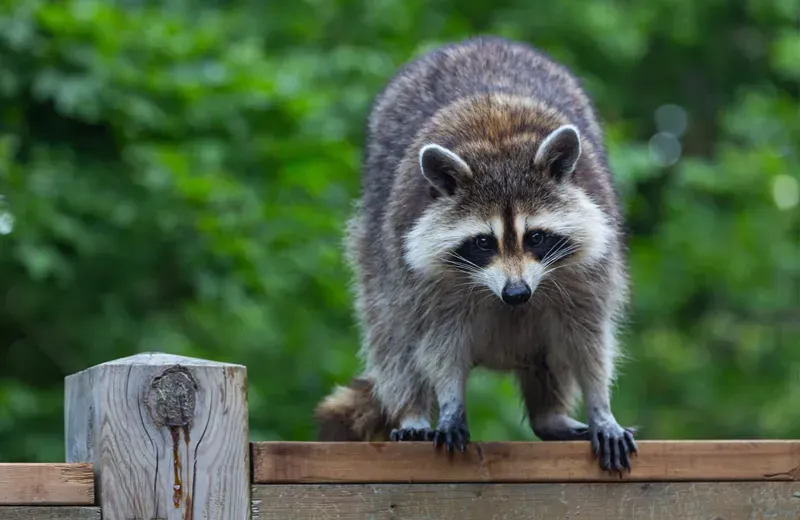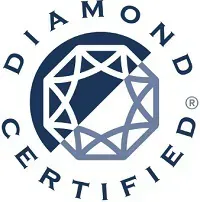Raccoon Removal in Antioch, CA
Our California Wildlife Pest Removal Professional Technicians provide a complete Racoon Wildlife Removal Solution including the repair of damage caused by the animals and wildlife waste cleanup.
If you need to get rid of your Racoon Issues with precision, care and expertise, contact the Pros at All N One Pest Eliminators by calling 888-815-9496. We are standing by and ready for your call.
Although they might seem furry and nice, the raccoon can be considered a nuisance animal to families & businesses. Raccoons dig through your garbage cans, can steal fish from your pond and food from your garden, and have public health concerns such as carrying rabies and transmitting diseases to humans and pets. Not only this, but raccoons can also get into your home and make it their own, causing structural damage such as chewed electrical wires and insulation.
Raccoons are not known to be aggressive animals unless they feel threatened. This means curious pets or children could potentially upset a raccoon, making them a dangerous wildlife animal to be dwelling around your property.
Continue reading to learn additional information about what attracts raccoons to your yard and control tips on how to effectively manage a raccoon infestation. Our team of Pest Control Professionals has helped many families live free of troublesome raccoons and other wildlife animals.
Top 4 Signs of a Raccoon Invasion
Raccoon Pest Removal Process & Strategy
All N One Pest Eliminators makes it easy to get started with our Racoon Pest Control Removal Services by starting with a Free Wildlife Animal Inspection and Estimate for both Residential & Commercial Customers.
Once we know the details of the Racoon Pest situation or infestation, we can better develop the optimal strategy to resolve the issues and safely remove the Racoons.
See All N One Pest Contol’s Standard Racoon Removal Service Processes below:
Free Wildlife Animal Inspection and Estimate
You can count on All N One Pest Eliminators to be at your home with 24 hours of your first call. Your specialist will speak with you and determine where and how to inspect your pest concern. After inspection, your raccoon control specialist will be able to decide the treatment options moving forward, as well as an estimate for you to review.
Raccoon Cage Trap Placement
With our Raccoon Wildlife Control Strategy in place, our pest control technicians will immediately start the treatment. Depending on your current pest problem, your raccoon control professional may suggest using humane wildlife bait, lure and trap raccoons. Rest assured, we will always use the most environmentally friendly products to get rid of raccoons on your property. We will take every precaution to keep your family and pets safe before, during and after your raccoon control treatment.
Raccoon Exclusion Work
In order to ensure that your house is secure from all pests and wildlife, All N One will go through exclusion work to protect your property. Exclusion work includes sealing entry points and blocking areas that may been attractive to critters, such as underneath decks, porches, sheds, and more. This will occur either before or after the treatment, depending on where the pests are located. Blocking entry points too early may trap an animal from getting out, so we make sure of the appropriate time to do it.
Treatment Monitoring and Wildlife Removal
Once the live traps have been placed to capture raccoons, our technician will monitor the trap for activity. Our control professional will remove raccoons from your property once captured. If the raccoon infestation is more extensive, your technician may need to make multiple visits to remove all invading raccoons.
Wildlife Prevention
Treating the immediate raccoon problem is only one part of protecting your home from unwanted animals. Addressing why your home was targeted by raccoons and where they gained access to your property is essential. This provides an effective raccoon control treatment, and protects your property from future raccoon invasions. Our control professional will locate potential areas of attractive natural resources and access points to make suggestions of preventative measures.
Damage
A raccoon’s main goal is to find food, shelter, and other resources. This means they will tear through anything in order to achieve their goal. Raccoons can cause structural damage to insulation, electrical wiring, wood, walls, and more. They can also rummage through a vegetable garden in search of food. These signs can indicate that a raccoon has invaded your home or yard.
Tracks & Stains
Simply seeing paw prints, tube shaped droppings, and stains are signs that a raccoon is on the premises.
Unexplainable Messes or Missing Items
A knocked over garbage can is typically attributed to a raccoon rummaging around in it. If your garbage can, garden, or landscaping has been tampered with, it might have been caused by a raccoon infestation. Raccoons are attracted to agriculture and natural resources, which means they can also eat fish and frogs out of ponds or fountains.
Visual & Audible Observations
Raccoons are nocturnal animals, but it is still possible to see them or hear them during the day. Sometimes, raccoons live in or under your home, so it is very likely to hear scratching sounds both in the daytime and at night.
What Attracts Raccoons to My Yard?
Raccoons are attracted to heavily wooded areas near bodies of water to make denning sites out of hollowed trees and to wash their food. Though considered a wild animal, raccoons are actually more commonly found in urban and suburban areas.
This means that if many trees are not readily available for a raccoon to nest in, they will find other places such as your home and lawn area.
Raccoons can make a home out of attics, basements, crawl spaces, chimneys, underneath decks, and more.
A raccoon’s diet mainly consists of whatever it is they can find. They prefer foods like fruit, berries, nuts, seeds, sweet corn, insects (such as yellow jackets), fish, and eggs.
Raccoons can and will adapt to their surroundings easily. If the foods they prefer are not accessible, they will seek out other resources such as trash cans, outdoor pet food dishes, and bird feeders.
Raccoon Identification and Facts
Adult raccoons are 2-3 feet in length and have thick, furry, striped tails, stocky bodies, and pointy noses. Raccoons are known for their black masks, which is marking around their eyes said to help them see better in the dark.
This black mask is often called a “bandit mask,” because raccoons are thieves of agriculture and natural resources. Raccoons typically live 2-3 years unless they are kept in captivity, then they can live up to 20 years.
Similar to human hands, raccoons have paws with five digits but do not have opposable thumbs. However, this does not mean that a raccoon cannot get into tricky places. Their dexterous front paws allow them the ability to open doors, latches, bottles, jars, and more. They are also great climbers.
Raccoons are the most active during the spring, summer, and fall but do not hibernate in the winter. Reproduction occurs during late winter, and female raccoons begin to look for an adequate place to give birth during the beginning months of the year.
Though raccoons are not typically known for being aggressive, it is important to remember that a female raccoon is very protective of her offspring. This could make her act aggressively if she feels threatened.
Public Health Concerns and Safety Risks
One of the most common health risks associated with raccoons is carrying rabies. Not all raccoons show symptoms of rabies, but this does not mean that they do not carry the disease. Rabies can be transferred to pets or humans through bites or by ingesting raccoon droppings.
It is important to note that raccoons are not typically aggressive animals unless they feel threatened. This means that prodding pets are more likely to scare raccoons, increasing the chance of a bite.
Other diseases that can be carried and transmitted by raccoons are most commonly salmonella, leptospirosis, and roundworm. All of these diseases can be carried by raccoons without significant or identifiable symptoms.
These can affect humans and pets, so if a substantial raccoon infestation is detected, it is recommended to be aware of these diseases and to check for them if necessary.
Raccoon roundworm is especially important to be cautious of, as it can affect and be fatal to both humans and other animals without symptoms. It has also been found that roundworm eggs can be found in infected raccoon droppings, which would likely be scattered around an invaded yard.
Top 7 Signs of a Raccoon with Rabies
Though not all raccoons have symptoms of rabies, they can still be carriers of the disease. Signs of a raccoon that potentially has rabies include:
- Confusion or disorientation
- Being oblivious to nearby noises
- Leg paralysis or difficulty walking
- Wet, matted, or tangled hair
- Considerable aggression
- Loud or unusual sounds
- Foaming at the mouth
Professional Raccoon Wildlife Damage Management
Although you may want to and it may seem reasonable to take the Raccoon Pest matters into your own hands. It is actually not something you want to do if you don’t understand the Wildlife Protection, Trapping and Relocation Laws.
It dosen’t matter what the raccoons may have done or the damaged to your property, but it does matter how the animals are dealt with and the legalities of doing so.
It is always better to be safe, and why it is important to consider the legal status of each wildlife animal in your area, and why it is usually best to have a Professional Wildlife Pest Removal Service take care of you and you Raccoon Pest Issues.
This will also be beneficial in damage control, as removing food, water, and other natural resources ensure that wildlife is not drawn to invade your property.
Along with the damage control tips listed above, it is very important to not feed raccoons or other wildlife that come on to your property. Feeding these animals makes them view you as a resource.
As a result, raccoons will continue to travel and attract other wildlife animals to your home if fed. You may feel responsible to care for a hungry or hurt animal, but it is highly advised to not make contact with wildlife.
Pest control professionals know the best way to help and redirect wildlife, so contacting them after continuous wildlife sightings is recommended.
There are certain wildlife animals that are protected by law, so it is highly suggested to take this factor into account when using at-home control methods and control products (such as live traps) instead of control companies.
To combat this issue before it happens, be sure to identify what might be attracting wildlife to your property. Animal control is more effective when it starts with prevention.

Raccoon Removal Service Area
All N One Pest Eliminators proudly serves customers in Northern California. Our experienced exterminators are capable of providing safe and effective pest control services to any location in our service area. Our service area includes the following:





